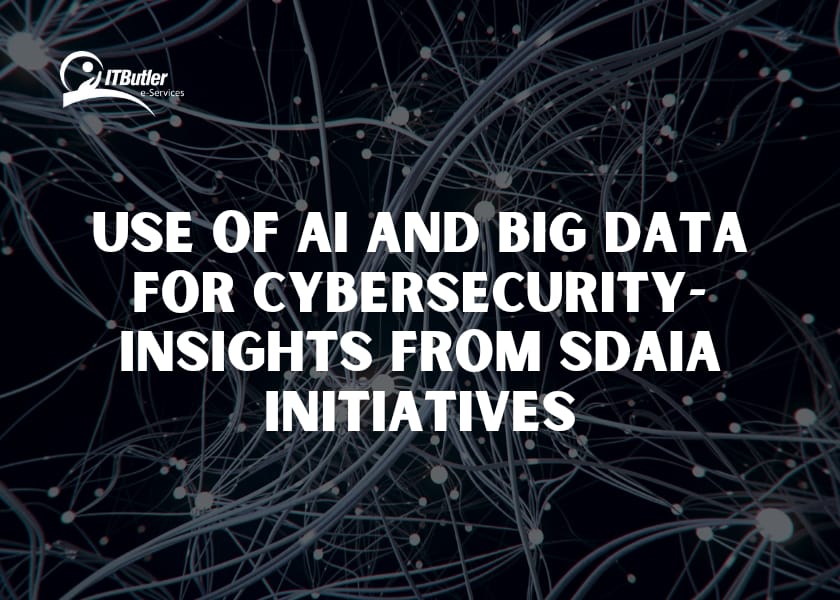Cybersecurity is no longer a luxury, but it has become a necessity in this modern digital world. Suppose one logs in to his bank account and finds out that all the savings have vanished into thin air. But what would be the reason? However, due to less security, cybercriminals hacked your account. Sounds terrifying, doesn’t it? That’s why organizations all over the world are strengthening their AI cybersecurity measures using technologies.
For example, in the Kingdom of Saudi Arabia, there exists the Saudi Data and Artificial Intelligence Authority. So, they are engaging with AI and big data to end early support on cybersecurity. Here, this blog explores how such technologies are shaping cyber defense strategies. Moreover, what initiatives SDAIA has undertaken to ensure the safeguarding of our digital world?
Role of AI Cybersecurity
Artificial intelligence is changing our approach towards cybersecurity. However, AI can quickly sift through data to quickly and accurately draw out valuable insights. Here is how AI enhances cybersecurity:
1. Threat Detection: With AI, the system can analyze network traffic in real time. So it identifies malicious patterns that signal a pending threat and responds quickly to emerging threats.
2. Predictive Analysis: Through analysis of history, AI will predict attacks in the future. From past incidents, organizations can prepare themselves for the same thing in the future.
3. Automate Response: AI can automatically do repetitive security tasks like monitoring logs and vulnerability scans. As it doesn’t rely on human resources for complex tasks.
What happens without Cybersecurity?
In the business world where malpractices can cause severe loss of money and devastations in reputation due to data breaches. The need for how much to invest in strong security measures cannot be overstated. The forms of cyber threats include:
1. Phishing: That misleading email or message that “robs” an unsuspecting individual of personal information.
2. Ransomware: This is a type of malicious software that locks users’ systems. Hence demanding their payback for restoration.
3. Malware: Malware is software that disrupts, damages, or gains unauthorized access to computer systems.
With such threats changing constantly, it is important for an organization to embrace the latest technologies against these dangers.
Big Data in Cybersecurity
Big data refers to those volumes of structured and unstructured data generated every second. However, it has emerged as a basic concept in cybersecurity. Moreover, it continues to enable the refinement of security measures based on decisions for organizations.
How Big Data Enhances Cybersecurity
Data Collection: Big data technologies enable organizations to collect and analyze data from different sources. However, data is mainly collected from network logs, user behavior, and information obtained from external sources on the threat.
Real-time Analytics: With big data analytics, organizations have been able to analyze events happening in real-time about security. As it empowers organizations to respond promptly before a threat worsens.
Behavioral Analysis: Big data tools can set a baseline of user behavior. So, If these baselines change in any way, it will raise the attention of organizations toward potential security breaches.
The Power of Integration
The only way such diversified tools could be merged would be through the creation of an effective cybersecurity framework. However, AI could likely analyze huge volumes of data, for threat detection to upgrade the response strategy. In each other, both AI and big data form an irrepressible defense against cyber threats.

SDAIA’s AI Initiatives for Cyber Defense
1. National AI Cybersecurity Center
SDAIA established the National Cyber Security Center. However, this is to counter Saudi Arabia’s cybersecurity using a central approach. This center employs AI tools that track ongoing cyber threats in real-time. This is what it does:
Shares threat intelligence: Among government agencies and private organizations to enhance collective cybersecurity efforts.
Incident Response: the center coordinates response activities after a cyber incident has occurred. Thus ensuring fast recovery of the affected organizations.
2. AI-Based Cybersecurity Technologies
SDAIA is actively working on the advancement of AI-based cybersecurity solutions that could detect vulnerabilities and threats. Some of the works it is undertaking include the following;
Threat detection: Automated threat detection relies on the algorithms of machine learning to detect unusual activities in networks. It alerts the system of possible threats before they can pose a problem.
Vulnerability assessment tools: SDAIA has put together tools that enable big data analytics to assess the susceptibility of systems to minimize vulnerabilities.
3. Training and Capacity Building
To apply all these technologies, SDAIA Saudi Authority for Data and Artificial Intelligence has also strong training and capacity building. It organizes workshops and training sessions for cybersecurity professionals on:
AI and Big Data in Cybersecurity: Trained professionals can make proper use of AI and big data in terms of improving cyber security.
Incident Response Strategy: Trained professionals are able to respond properly to cyber incidents with the right strategy to minimize damage and recover quickly.
Challenges and Considerations
1. Evolving Cyber Threats
Cybercrooks are always improving and scanning around for the latest new move to breach security controls. However, it means AI cybersecurity solutions have to evolve with lightning speed, too. Moreover, organizations will need to keep their defenses while keeping pace with the latest threats.
2. Challenges related to Data Privacy
Because of data collection for analysis, the concern about privacy and regulatory compliance grows in organizations. Therefore, balancing these powerful security measures against concern for the user’s privacy is very critical. Organizations should be assured that they handle sensitive information responsibly.
3. The Skills Gap in Cybersecurity
The advancement of big data and AI has resulted in a significant skills gap for the cybersecurity workforce. Most of them might not possess the specific skills required for implementation and management. Therefore, education and training will be an important step to bridge such gaps.
4. High Implementation Costs
Here, the question is related to cost because big data solutions and AI are always costly. Therefore, In small organizations, there is a slight struggle to get enough to establish such solutions. Thus, affordable and cloud-based services solve such problems.
5. Dependence on Technology
Organizations are at risk of overreliance on technology or dependence on AI and big data for cybersecurity. Those tools are valuable, but in terms of really measuring the threats, human expertise is important for all strategic decisions.
Conclusion
Harvesting big data and AI cybersecurity is imperative today. With the immense effort from organizations like SDAIA, we are assured of taking great steps toward a safer digital future. However, the protection of our assets and data from such continually evolving threats will only be possible with technologies.
Next time you hear the terms AI and big data in cybersecurity, remember they are not buzzwords Instead, unsung heroes that silently go about making your digital life. Change is inevitable, let’s build a safer online world together!
